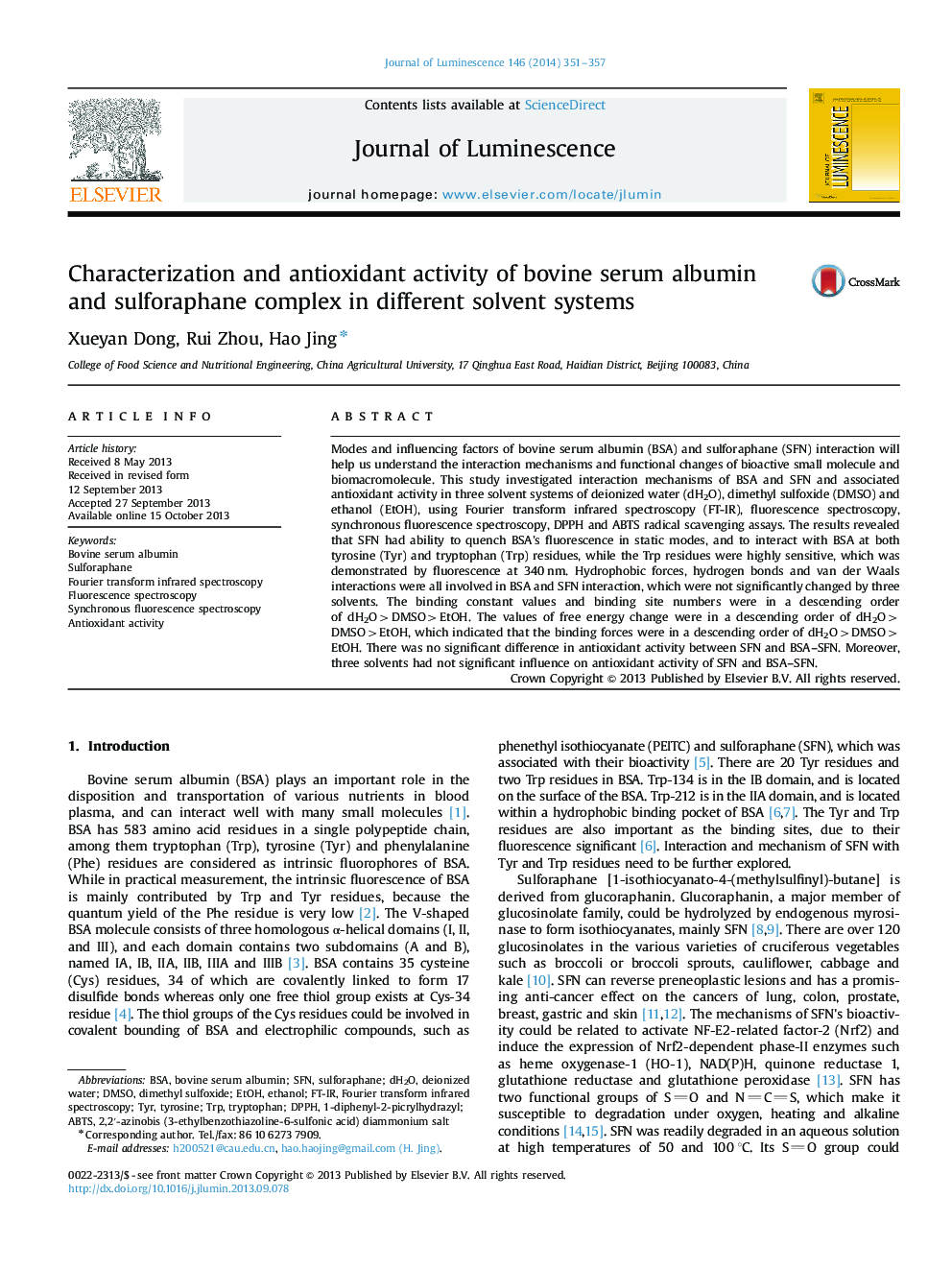| Article ID | Journal | Published Year | Pages | File Type |
|---|---|---|---|---|
| 5400351 | Journal of Luminescence | 2014 | 7 Pages |
Abstract
Modes and influencing factors of bovine serum albumin (BSA) and sulforaphane (SFN) interaction will help us understand the interaction mechanisms and functional changes of bioactive small molecule and biomacromolecule. This study investigated interaction mechanisms of BSA and SFN and associated antioxidant activity in three solvent systems of deionized water (dH2O), dimethyl sulfoxide (DMSO) and ethanol (EtOH), using Fourier transform infrared spectroscopy (FT-IR), fluorescence spectroscopy, synchronous fluorescence spectroscopy, DPPH and ABTS radical scavenging assays. The results revealed that SFN had ability to quench BSA's fluorescence in static modes, and to interact with BSA at both tyrosine (Tyr) and tryptophan (Trp) residues, while the Trp residues were highly sensitive, which was demonstrated by fluorescence at 340Â nm. Hydrophobic forces, hydrogen bonds and van der Waals interactions were all involved in BSA and SFN interaction, which were not significantly changed by three solvents. The binding constant values and binding site numbers were in a descending order of dH2O>DMSO>EtOH. The values of free energy change were in a descending order of dH2O>DMSO>EtOH, which indicated that the binding forces were in a descending order of dH2O>DMSO>EtOH. There was no significant difference in antioxidant activity between SFN and BSA-SFN. Moreover, three solvents had not significant influence on antioxidant activity of SFN and BSA-SFN.
Keywords
Related Topics
Physical Sciences and Engineering
Chemistry
Physical and Theoretical Chemistry
Authors
Xueyan Dong, Rui Zhou, Hao Jing,
